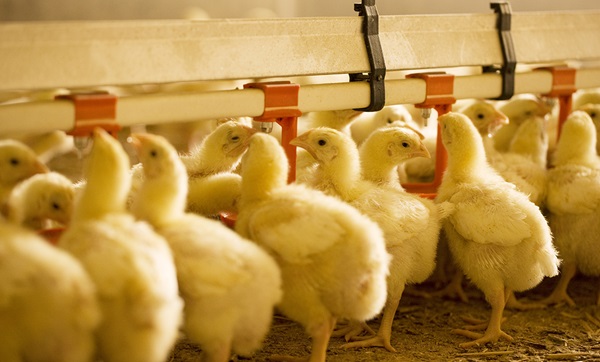10/16/2020:
Jose L. Gonzales, Sylvia Pritz‐Verschuren, Armin R. W. Elbers and Nancy Beerens (Wageningen Bioveterinary Research), Jeanine Wiegel (Royal GD) and Ruth Bouwstra, Published by Avined
The risk of introduction of avian influenza at poultry farms is four times higher from November to February than in the summer months, according to research by Wageningen Bioveterinary Research and Royal GD. Interventions aimed at preventing introduction of avian influenza should therefore be focused on this winter period in particular.
Poultry can become infected with avian influenza viruses through direct contact with infected wild birds or their faeces. Wageningen Bioveterinary Research (WBVR) had already determined that the risk of introduction of low-pathogenic avian influenza viruses was higher at poultry farms with a free-range area. In a recent study, WBVR and GD examined whether this risk is higher during certain periods of the year.
Study methodology
This study used the data of the serological monitoring programme for avian influenza, and eggs were collected from 261 free-range farms over a two-year period. In the monitoring programme, blood samples from poultry are tested for antibodies against avian influenza once every three months. Once antibodies had been detected, the eggs collected during the period prior to the detection of antibodies were tested to determine when the virus was introduced. Subsequently, mathematical and statistical models were used to calculate the time of introduction of the virus and the period of the year when there is a higher risk of introduction.
Interventions should be focused on the winter period
This study has shown that the introduction of low-pathogenic avian influenza viruses mostly takes place from November to February. The same risk period was identified for introduction of highly pathogenic avian influenza viruses. The risk of introduction of avian influenza at poultry farms is four times higher in this period than in the summer months. In winter, there are a lot of migratory birds that spend the winter in the Netherlands. Interventions, including those by farmers, aimed at preventing introduction of avian influenza, should therefore be focused on this winter period in particular.
Avian influenza also occurs in summer
In practice, however, the avian influenza virus also appears in the summer period. HPAI H5N8 was found in Bulgaria and Hungary in June 2020, while Italy was also affected by low-pathogenic avian influenza. That is why it is important to remain alert, also in the summer.
More information
